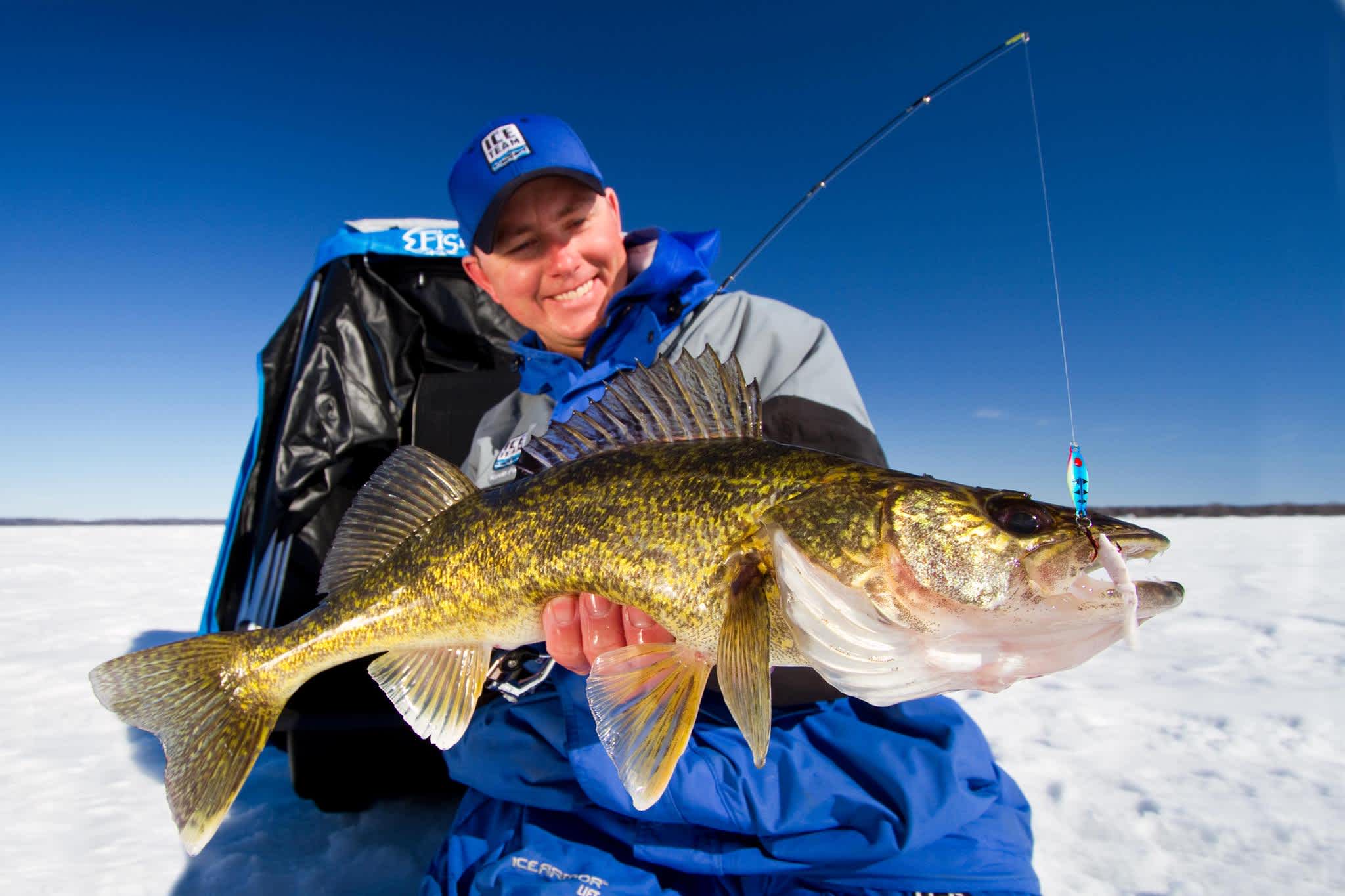Secrets for Catching Early Ice Walleyes
Bernie Barringer 12.03.14

Some of the best-eating and easiest-to-catch Walleyes of the year can be placed on ice as soon as it’s safe to venture out. Here’s where to find them and how to make them bite.
Avid ice fishermen cannot wait to get out on that first ice of the year. They know the bite is good and the fish are still in an active feeding mode. Here in Minnesota, ice fishing usually starts around Thanksgiving or shortly afterward, and those first few weeks until Christmas can be some of the best fishing of the year. This is true for several species, but in particular for walleyes.
Jason Durham is a fishing guide with 23 years of experience. His home near Park Rapids, Minnesota is known for great fishing both in the summer and in the winter, and he knows where and how to catch them. I picked his brain about early season ice fishing for walleyes; his suggestions will work anywhere walleyes are found. Here’s some savvy advice from someone who really knows his business.

Location, location, location
Many anglers love the fall bite for walleyes and refuse to put their boat away until they can no longer launch and fish due to ice cover. Durham said the same places the walleyes are found right before ice up is where you will find them once you start walking on water. “Look for the baitfish on your depthfinder, just like you would from a boat,” he shared. “If you do not see the bait, keep drilling holes and checking until you find it. As soon as you see the bait, look for some structural element nearby.”
The structure that holds the walleyes can be something as subtle as a bottom transition from sand to mud or as obvious as a rock pile. Other structure can be a point, a saddle or the deep edge of the weeds. “Most of the fish will be found on these areas in 16 to 20 feet of water in clear lakes, and a little shallower in dingy water lakes, maybe more like 12 feet.”
Don’t overlook the weeds themselves. Jason said that some of his biggest fish of the year come right out of the deep weeds at first ice. “Turn down the gain on your depthfinder so you don’t get as much clutter from the weeds. Cabbage can grow deep in clear lakes and hold some big fish at this time. You’ll find lots of bait in the cabbage because the oxygen levels are high, which attracts all fish.”
The right lure
Once you have found the fish, picking the right lure is easy. “I like a jigging spoon for this type of fishing,” he explained. “It’s the perfect search bait. You have to keep moving until you find the fish, but at some point you have to make the fish come to you. The jigging spoon has the attraction that brings them in.”
Color can be very important in ice fishing. Jason advocates choosing a color based on the primary forage for the lake. You will want to mimic perch, shiners, bluegills or whatever the walleyes are likely to be feeding on in these areas. An Aqua-Vu can be the ticket to learning this; you can lower it into a cloud of bait and see what the fish are feeding on.
Use natural colors in clear water and brighter colors like orange and chartreuse in dingier water for high visibility. Durham said you don’t need to change lure colors too often. “I see people spending too much time experimenting. You have to keep your bait in the water.” He suggested choosing a couple good options and stick with them. “Ice fishing rods and reels are low cost investments. If you think you may be changing lures much, tie them up at home and have a new rod ready so you can just grab it.” These fish may be on the move so the time you use tying on a new lure might cost you a fish.

Perfect presentation
Jason often tips his jigging spoon with a minnow and drops it to the bottom. “I like a lively minnow that is struggling right on the bottom. After all, we fish right on the bottom during the summer; but it seems like ice fishermen want to fish way off the bottom all the time.” This can be just the ticket for fish that are not as aggressive.
When the fish are actively feeding, he likes to pinch off the head of a minnow and add it to his jigging spoon. That scent can be just the ticket to triggering a bite. “I like to use one active bait like a Psycho Shad and one bait that allows for a subtle presentation such as a live minnow on a set line. I will use my Clam hub style tent for a base and move around while fishing the area.”
Many people see ice fishing as a stationary endeavor requiring long hours of boredom, but Jason’s aggressive style of walleye fishing is more like hunting. He keeps on the move after the fish, reading his electronics and staying on top of the walleyes which can be roaming around the structure at this time of the year. It’s never boring. “I drill hole after hole and make sure there are signs of life under me at all times,” he said. And he puts the walleyes on the ice which proves that his system works. Heed his advice next time you head out on the hardwater for some early ice fishing. You will be bringing home more tasty fillets because of it.
Follow Bernie’s bowhunting adventures on his blog, bowhuntingroad.com.

